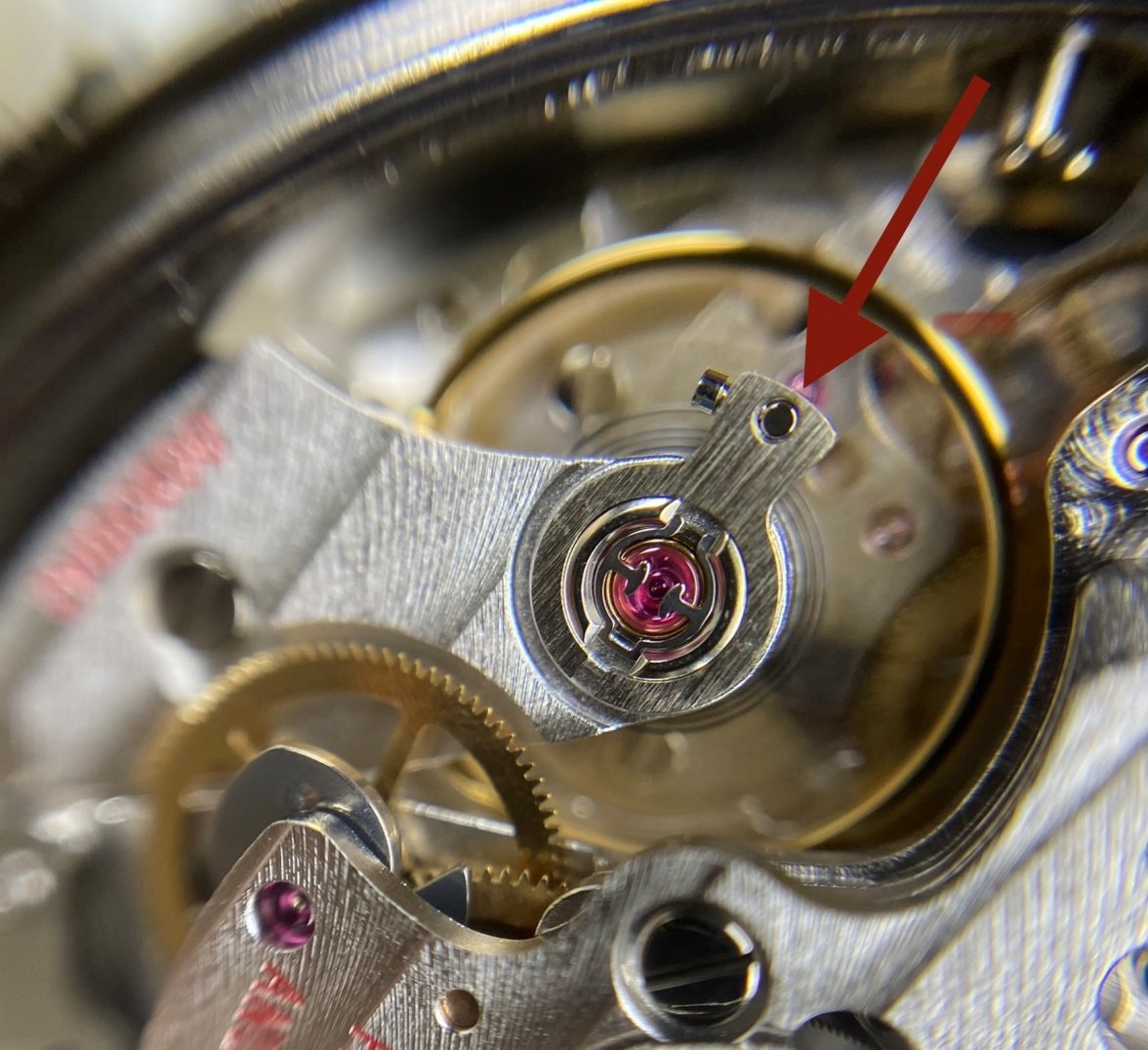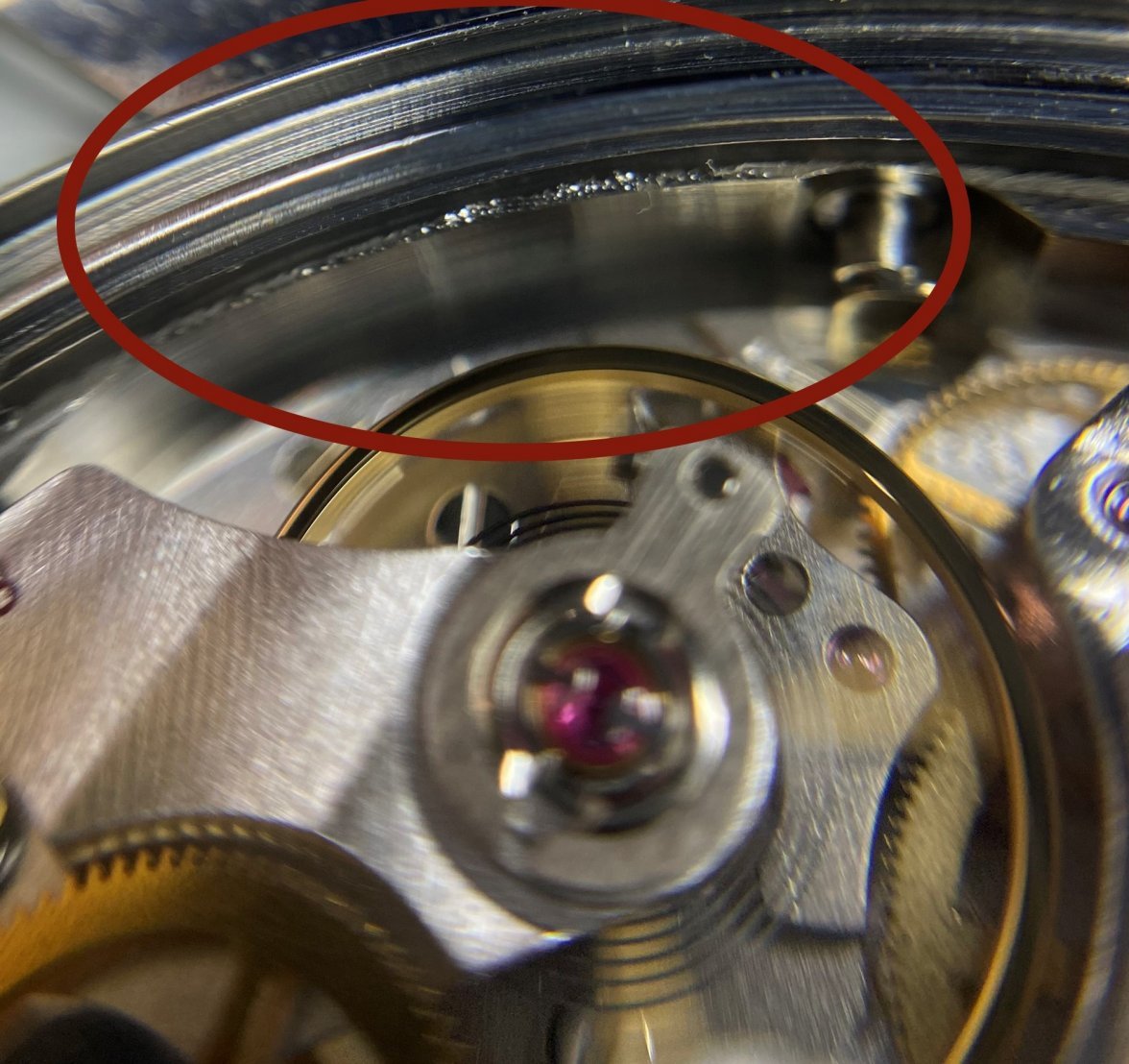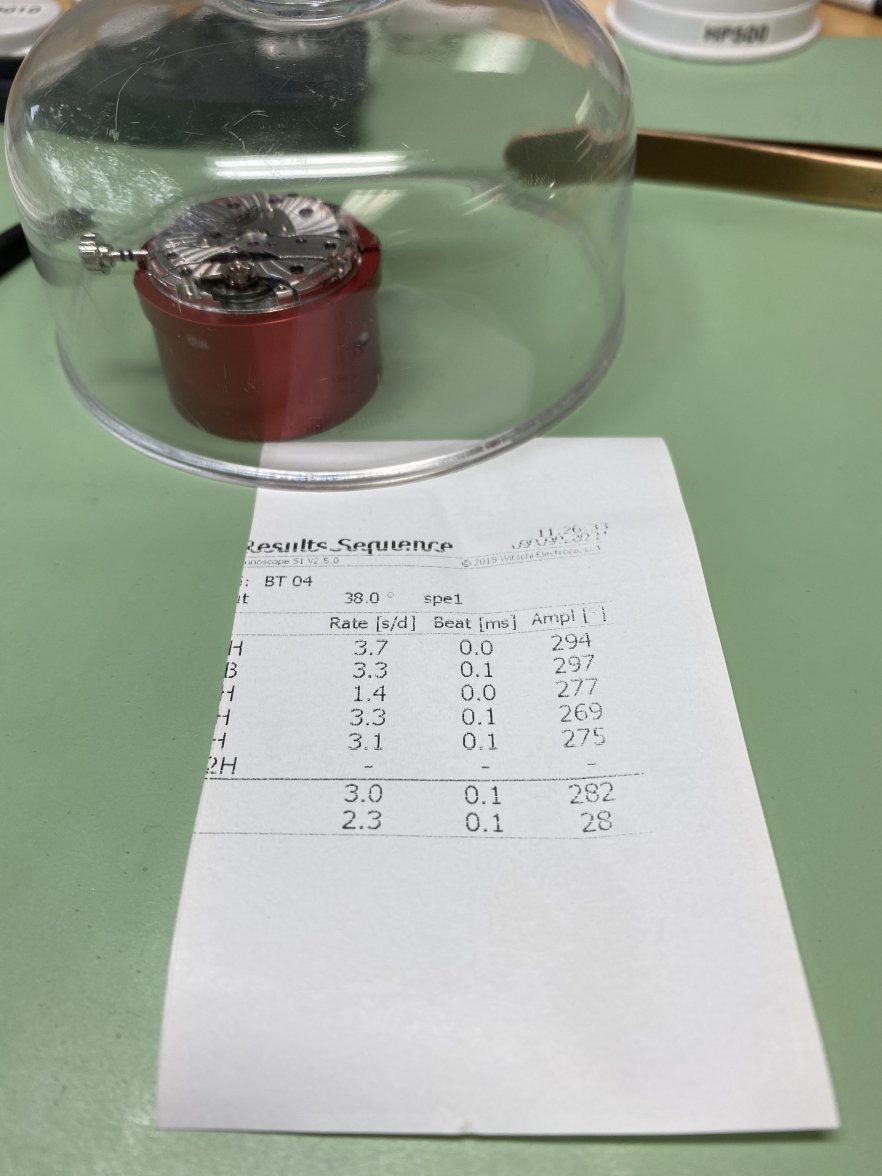CharlieM0uze
·Hi folks
I have two items I was wondering if somebody could advise me on... regarding my Speedmaster Racing co-axial.
I have been using "Toolwatch" (a neat tool for recording watch accuracy) to check my Speedmaster.
So over then last several days the watch has been gaining 4.4 seconds per day consistently, while on the wrist.
This is chronometer certified watch, so within -4 / +6 COSC specifications but I find this gain a bit too much.
Ideally I would like to get this to +1 or +2 per day, which should be possible.
I managed to regulate my Longines (which has ETA7753/L683.2 caliber) to within this accuracy, which is not COSC.
The Longines has a micro adjuster and a -/+ scale to help guide, so far more user friendly on this point.
The 3330 uses the same ETA7753 base, however has no such micro adjuster and no -/+ guide.
Is there any special considerations with the 3330 for regulation? I assume a super small nudge anti-clockwise on the regulator would slow the watch down (same as with the L683.2).
Please observe the first attached photo...
Then, on a separate topic, please observe the second photo.
I have spotted some scuffs (within the red circle), just wondering if this is normal or an indication of some wrong doings by somebody with no skills.
Looking forward to some helpful advise.
All positive input is welcome 😀
thanks in advance folks.
I have two items I was wondering if somebody could advise me on... regarding my Speedmaster Racing co-axial.
I have been using "Toolwatch" (a neat tool for recording watch accuracy) to check my Speedmaster.
So over then last several days the watch has been gaining 4.4 seconds per day consistently, while on the wrist.
This is chronometer certified watch, so within -4 / +6 COSC specifications but I find this gain a bit too much.
Ideally I would like to get this to +1 or +2 per day, which should be possible.
I managed to regulate my Longines (which has ETA7753/L683.2 caliber) to within this accuracy, which is not COSC.
The Longines has a micro adjuster and a -/+ scale to help guide, so far more user friendly on this point.
The 3330 uses the same ETA7753 base, however has no such micro adjuster and no -/+ guide.
Is there any special considerations with the 3330 for regulation? I assume a super small nudge anti-clockwise on the regulator would slow the watch down (same as with the L683.2).
Please observe the first attached photo...
Then, on a separate topic, please observe the second photo.
I have spotted some scuffs (within the red circle), just wondering if this is normal or an indication of some wrong doings by somebody with no skills.
Looking forward to some helpful advise.
All positive input is welcome 😀
thanks in advance folks.
Edited:


